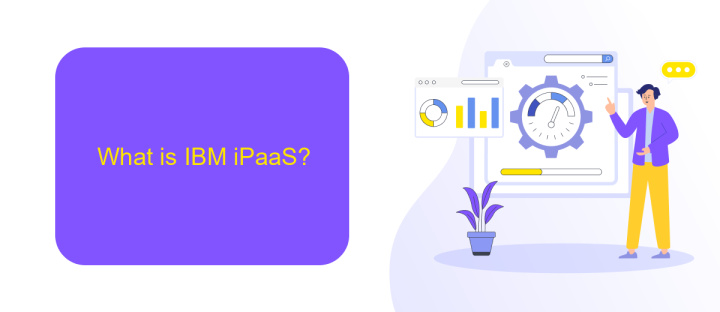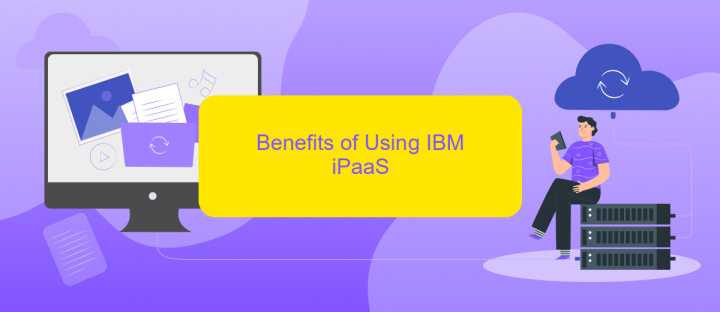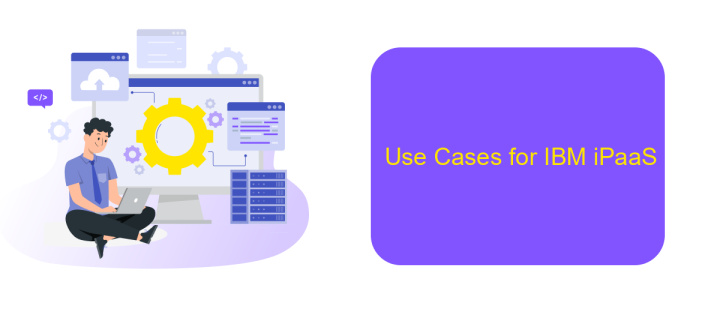iPaaS IBM
IBM's Integration Platform as a Service (iPaaS) offers a comprehensive solution for businesses seeking seamless integration of their diverse applications and data sources. By leveraging IBM's robust cloud infrastructure, iPaaS enables organizations to streamline workflows, enhance data connectivity, and accelerate digital transformation. This article explores the key features, benefits, and use cases of IBM's iPaaS, illustrating its pivotal role in modern enterprise integration.
Introduction
IBM's Integration Platform as a Service (iPaaS) offers a comprehensive solution for businesses looking to streamline their integration processes. By providing a cloud-based platform, IBM iPaaS facilitates seamless connectivity between diverse applications, data sources, and services, thereby enhancing operational efficiency and reducing integration complexities.
- Cloud-based integration for diverse applications
- Enhanced operational efficiency
- Reduction in integration complexities
- Seamless connectivity between data sources
Additionally, services like ApiX-Drive can further augment the capabilities of IBM iPaaS by offering automated integration setups without the need for extensive coding. ApiX-Drive simplifies the process of connecting various applications and services, making it easier for businesses to achieve their integration goals swiftly and effectively. Together, IBM iPaaS and ApiX-Drive provide a robust framework for modern enterprises to thrive in a connected ecosystem.
What is IBM iPaaS?

IBM's Integration Platform as a Service (iPaaS) is a cloud-based solution designed to streamline the integration of various applications, data sources, and services across an organization. By leveraging IBM iPaaS, businesses can achieve seamless connectivity between on-premises systems and cloud applications, enabling efficient data flow and process automation. This platform offers a robust set of tools and pre-built connectors that simplify the integration process, reducing the need for extensive custom coding and minimizing the time required to deploy new integrations.
One of the key features of IBM iPaaS is its user-friendly interface, which allows both technical and non-technical users to configure integrations with ease. For example, services like ApiX-Drive can be integrated with IBM iPaaS to further enhance the automation of data transfers and synchronization across different platforms. This combination ensures that businesses can maintain accurate and up-to-date information across all systems, thereby improving operational efficiency and decision-making. With IBM iPaaS, organizations are equipped to handle complex integration scenarios, ensuring scalability and flexibility in their IT infrastructure.
Benefits of Using IBM iPaaS

IBM iPaaS (Integration Platform as a Service) offers a robust solution for businesses aiming to streamline their integration processes and enhance operational efficiency. By leveraging IBM iPaaS, organizations can seamlessly connect disparate systems, applications, and data sources, facilitating smoother workflows and improved data management.
- Scalability: IBM iPaaS provides a scalable infrastructure that can grow with your business, ensuring that integration needs are met as your enterprise expands.
- Cost Efficiency: By utilizing a cloud-based platform, businesses can reduce the costs associated with maintaining on-premises integration solutions.
- User-Friendly Interface: The platform offers an intuitive interface that simplifies the process of setting up and managing integrations, making it accessible even to non-technical users.
- Enhanced Security: IBM iPaaS ensures that data transfers are secure, protecting sensitive information from potential breaches.
- Flexibility: With support for various integration patterns and protocols, IBM iPaaS can accommodate a wide range of integration scenarios.
Additionally, services like ApiX-Drive can complement IBM iPaaS by providing specialized tools for automating and managing integrations between various applications and services. This combination allows businesses to achieve a higher level of efficiency and reliability in their integration efforts, ultimately driving better business outcomes.
Use Cases for IBM iPaaS

IBM iPaaS (Integration Platform as a Service) offers versatile solutions for businesses seeking to streamline their integration processes. This platform enables seamless connectivity between disparate systems, applications, and data sources, ensuring efficient data flow and operational consistency.
One of the primary use cases for IBM iPaaS is in automating workflows and business processes. By integrating various applications, businesses can eliminate manual data entry, reduce errors, and enhance productivity. Additionally, IBM iPaaS supports real-time data synchronization, which is crucial for maintaining up-to-date information across all platforms.
- Connecting on-premises and cloud applications
- Automating data transfers between systems
- Enhancing customer experiences through integrated CRM systems
- Streamlining supply chain management
- Facilitating seamless e-commerce operations
For businesses looking to simplify the integration setup, services like ApiX-Drive can complement IBM iPaaS by providing user-friendly interfaces and pre-built connectors. This combination allows for quicker deployment and more efficient management of integrations, empowering businesses to focus on their core operations while ensuring robust connectivity across their IT landscape.
Conclusion
In conclusion, IBM's iPaaS solution offers a robust and scalable platform that addresses the diverse integration needs of modern enterprises. By providing a comprehensive suite of tools and services, it enables seamless connectivity between various applications, data sources, and cloud environments. This not only enhances operational efficiency but also accelerates digital transformation initiatives, allowing businesses to stay competitive in an ever-evolving technological landscape.
Moreover, the integration capabilities are further enhanced by complementary services like ApiX-Drive, which simplifies the process of connecting different systems and automating workflows. By leveraging such tools, organizations can achieve faster time-to-value and reduce the complexities associated with traditional integration methods. As a result, IBM iPaaS, combined with services like ApiX-Drive, stands out as a powerful solution for enterprises looking to streamline their integration processes and drive innovation.
FAQ
What is iPaaS?
How does iPaaS benefit businesses?
Can iPaaS be used for both cloud and on-premises applications?
What are some common use cases for iPaaS?
How easy is it to set up integrations with iPaaS?
Routine tasks take a lot of time from employees? Do they burn out, do not have enough working day for the main duties and important things? Do you understand that the only way out of this situation in modern realities is automation? Try Apix-Drive for free and make sure that the online connector in 5 minutes of setting up integration will remove a significant part of the routine from your life and free up time for you and your employees.

